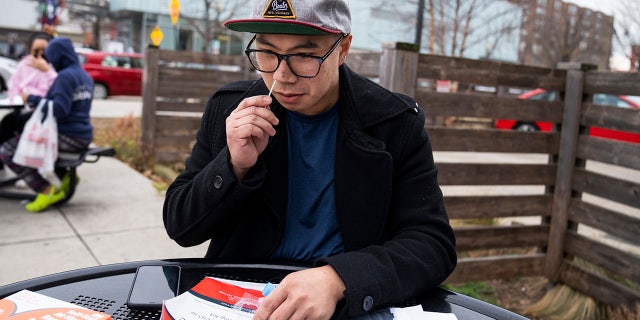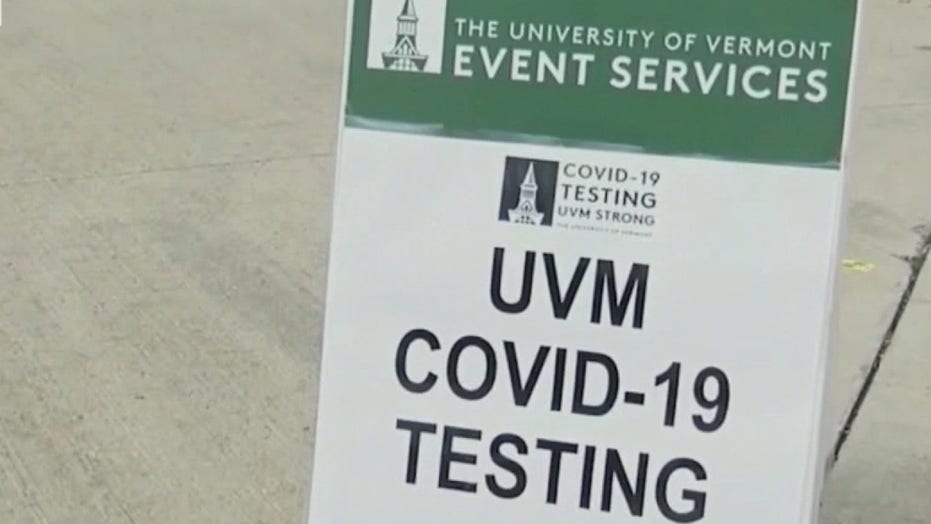
US a ‘long way’ from COVID testing needs: Former CDC acting director
Robert Wood Johnson Foundation President and CEO Dr. Richard Besser addresses the COVID-19 testing crunch, mask policies and vaccines as the Omicron variant surges across the country.
Citing COVID-19 testing backlogs in the U.S. amid a surge in COVID-19 cases, a doctor argued in an article published Monday that these tests would be best served if they were used by symptomatic individuals who could benefit most from early intervention.
Dr. Benjamin Mazer, a physician who specializes in laboratory medicine and frequent writer in the Atlantic, wrote in the magazine that it may seem “reckless to suggest that people undergo less [italics his] surveillance,” but argued that it cannot be ignored that “each unnecessary swab that you consume means one fewer is available for more important purposes—such as diagnosing a symptomatic infection.”

Dec. 29: Aaron Salvador swabs his nose with a COVID-19 rapid antigen test kit in Washington, D.C. (Photo By Tom Williams/CQ-Roll Call, Inc via Getty Images)
( Tom Williams/CQ-Roll Call, Inc via Getty Images)
The Biden administration has suffered a political blow from critics who say it did not anticipate a new surge of infections and focused too heavily on vaccinations. President Biden told governors late last month that the effort has not been enough.
“We have to do more,” he said. “We have to do better, and we will.”

Dec. 20: Residents wait in line to receive free rapid at-home Covid-19 test kits at a vaccine clinic in Philadelphia, Pennsylvania. Photographer: Hannah Beier/Bloomberg via Getty Images
(Hannah Beier/Bloomberg via Getty Images)
Biden said it was not a failure but said the new cases led to an alarm bell going off. The Biden administration announced a plan to purchase 500 million at-home rapid tests for COVID-19 and distribute them for free. Mazer said that these rapid tests will not “resolve our national shortage.”
He wrote about the old saying, “You are not stuck in traffic. You are traffic,” and urged those—whenever possible—to clear the way for symptomatic individuals who are most at risk for severe infection.
“It’s true that testing low-risk people can break infection chains that eventually reach the more vulnerable, but this will be of little consolation to susceptible community members who can’t even ensure that their direct contacts have been cleared of infection,” he wrote in the magazine.
The Associated Press contributed to this report
Source: Read Full Article
